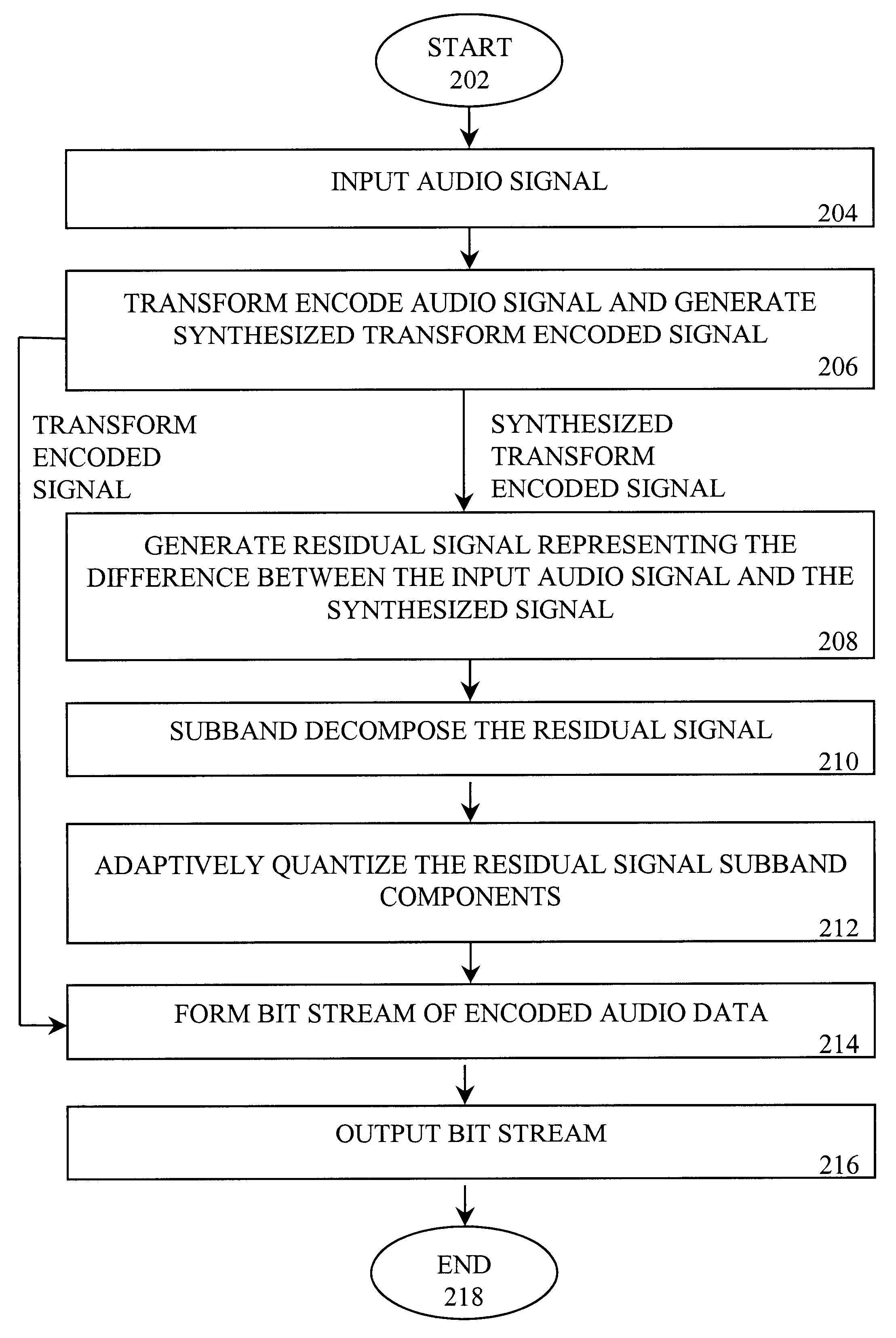Audio compression and decompression employing subband decomposition of residual signal and distortion reduction
a residual signal and audio compression technology, applied in the field ofsignal processing, can solve the problems of reducing the quality of synthesized audio signals, ignoring the relatively substantial components of audio signals, and limiting the use of past transform audio compression techniques
- Summary
- Abstract
- Description
- Claims
- Application Information
AI Technical Summary
Problems solved by technology
Method used
Image
Examples
Embodiment Construction
While the invention has been described in terms of several embodiments, those skilled in the art will recognize that the invention is not limited to the embodiments described. In particular, the invention can be practiced in several alternative embodiments that provide subband decomposition of a residual signal (which represents the difference between an input audio signal and an encoded and synthesized signal generated from the input audio signal) and / or distortion detection and reduction based on a comparison of the input audio signal with the encoded and synthesized signal.
Thus, while several embodiments have been described using trellis quantization, wavelet decomposition, and transform encoding, it should be understood that alternative embodiments do not necessarily perform trellis quantization, wavelet decomposition, and / or transform encoding. Furthermore, alternative embodiments may use one or more types of criteria to detect distortion (e.g., signal-to-noise ratio, noise-to-...
PUM
 Login to View More
Login to View More Abstract
Description
Claims
Application Information
 Login to View More
Login to View More - R&D
- Intellectual Property
- Life Sciences
- Materials
- Tech Scout
- Unparalleled Data Quality
- Higher Quality Content
- 60% Fewer Hallucinations
Browse by: Latest US Patents, China's latest patents, Technical Efficacy Thesaurus, Application Domain, Technology Topic, Popular Technical Reports.
© 2025 PatSnap. All rights reserved.Legal|Privacy policy|Modern Slavery Act Transparency Statement|Sitemap|About US| Contact US: help@patsnap.com



